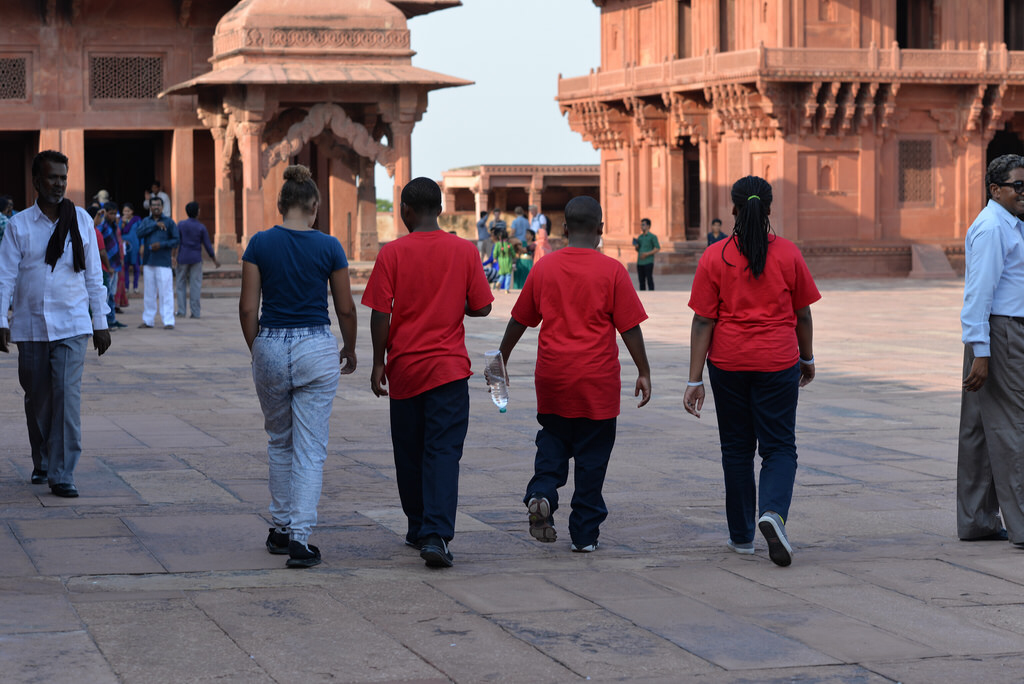Once you know other possibilities are out there, you can’t un-know it and often this happens by traveling abroad. Sanjli Gidwaney, the founder of the US chapter of Design for Change, has seen this firsthand by taking a group of students abroad last year.
This year she needed to crowdfund again, except she decided to search for a new platform because of high transaction fees and poor customer service in their previous platform. That’s when she found CauseVox and raised $10,000 to change the lives of another group of students.
Who are you & how did you find out about Design for Change?
My name is Sanjli Gidwaney and I run the US chapter of Design for Change, but Design for Change is an international movement. I helped found the US chapter and I’ve been running the organization for about four years now. Although Design for Change is in several schools, we’re headquartered in Boston.
I found out about Design for Change in India when I was there working with several nonprofits. These nonprofits were working mostly with low-income kids to develop their creativity skills. I wanted to get a holistic picture so I picked one private school — who’d maintained a lot of breakthroughs — and it happened to be a Design for Change school.
I saw how Design for Change schools treated kids like global citizens as they fostered a high level of creativity by allowing kids to express their own ideas and put them into action. After seeing breakthroughs in India I thought low-income areas of the US might respond similarly.
Why CauseVox?
This year was our first time with CauseVox, but we crowdfunded with another platform last year. We weren’t thrilled with our old platform, especially the fees. The fees were incredibly high so we lost a lot of money. We retained most of our funding but decided we didn’t want to lose that much again if we could avoid it.
The other platform was so big and they had so many rules. Once your campaign goal was set you couldn’t change it, but with CauseVox we could change it. Not to mention, CauseVox’s tech support was really fast, which was great because I had a billion questions!
I know you said you were raising funds to take a group of students abroad, but can you tell me more about this?
Sure. Every year Design for Change hosts a conference in India. Every country brings a winning team (e.g., Mexico, US, Australia) of students to a global conference. Every school has multiple teams enter to win to go on this trip by submitting a project where they have generated original ideas and taken action on them.
At the conference, they get to showcase their project, participate in workshops, and meet people from other countries. Kids like these are growing up in neighborhoods with drugs, prostitution, and crime. They have never traveled before. For this reason, we also include a special trip to Taj Mahal.
Can you tell me about a success story from your most recent trip to India?
Of course. This year one of the winning US teams was a group of 5th graders from south Dallas. Their project was to shut down “trap houses,” places where people convene to use and sell drugs in their neighborhoods. They felt like it caused people to drop out of school so they talked to local authorities and figured out a way to shut those down. When people found out they were selected to go to India they got a lot of press coverage! Finally, they were being noticed for the right reasons. They were featured on Fox News and various public news outlets. You can watch the three-minute news brief below.
As a result of the conference, they got out of their element. Getting out of their neighborhoods into a foreign place causes them to dream big. Most don’t dream of a life outside of their immediate communities. They think they’re going to work at Wal-Mart and live off welfare for the rest of their lives. Watching them be part of crazy flash mob dances and interact with kids from all over the world is so rewarding. You can see how inspired they are once they get there and begin meeting people outside their communities.
Traveling has a unique impact on people’s perspective on their own lives- on what’s possible
If you could do the crowdfunding campaign over what would you do differently?
I was told by a social media guru, one thing we made a mistake this year, was that our campaign was too long. There was no sense of urgency around it. I would make it shorter. We wanted to raise $10,000 in eighty days, and we did, but next time we would make it shorter.
I would also promote it more through social media channels better. I would have a clear strategy to promote awareness around the campaign.
What tips would you offer to another crowdfunder?
I think one of the most important things for us was having a really good video which we had luckily. I think it’s the hook. We had some text on the page, but I don’t think people cared to read that. A high-impact video is definitely a strategy that works well.
I think people are drawn to numbers. They want to know how their donations would be used. For people to know $50 would cover ‘x’ or $100 would provide ‘y’ gave people a specific goal they were donating to. This way it’s easier for people to wrap their heads around what they’re giving.





